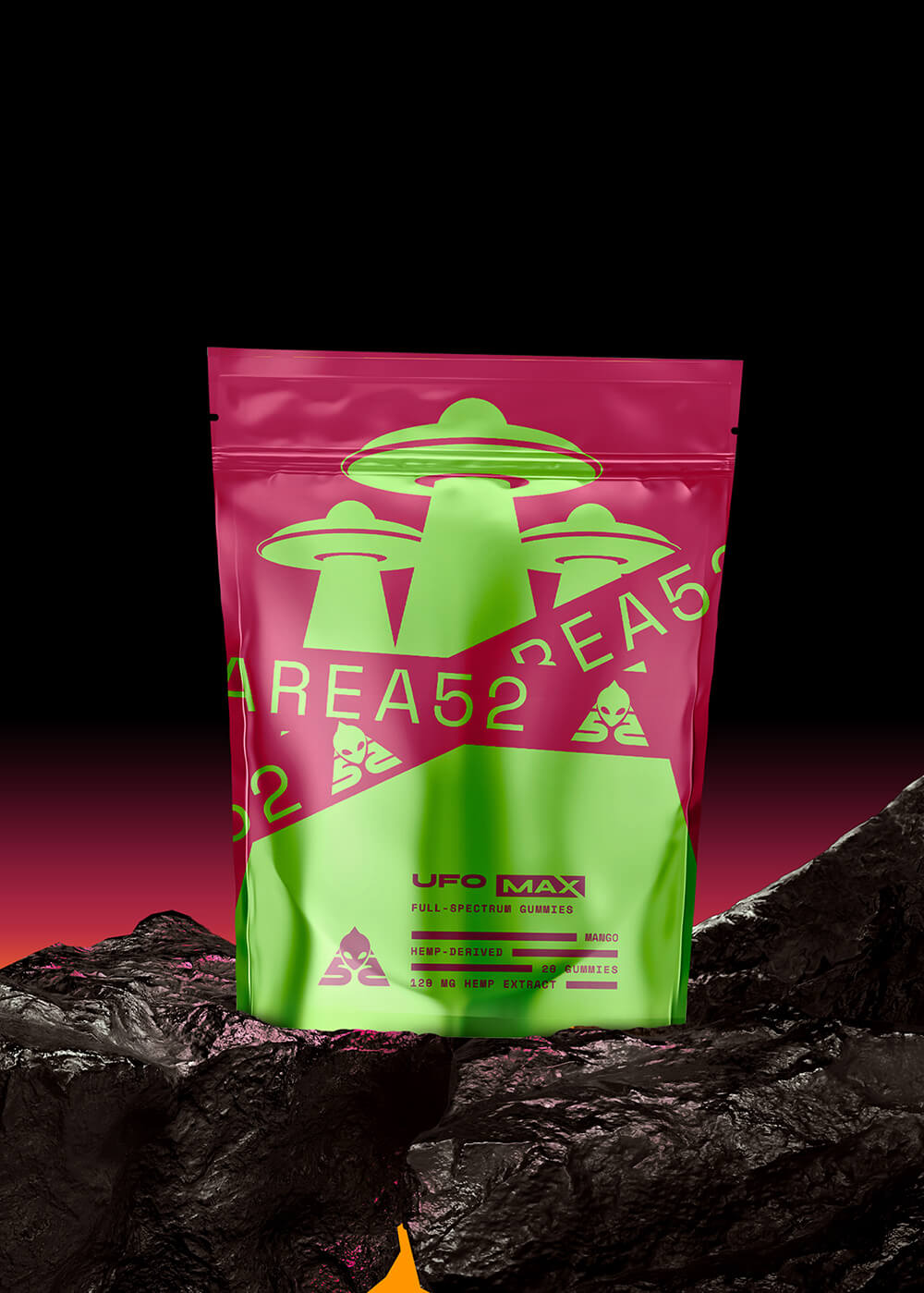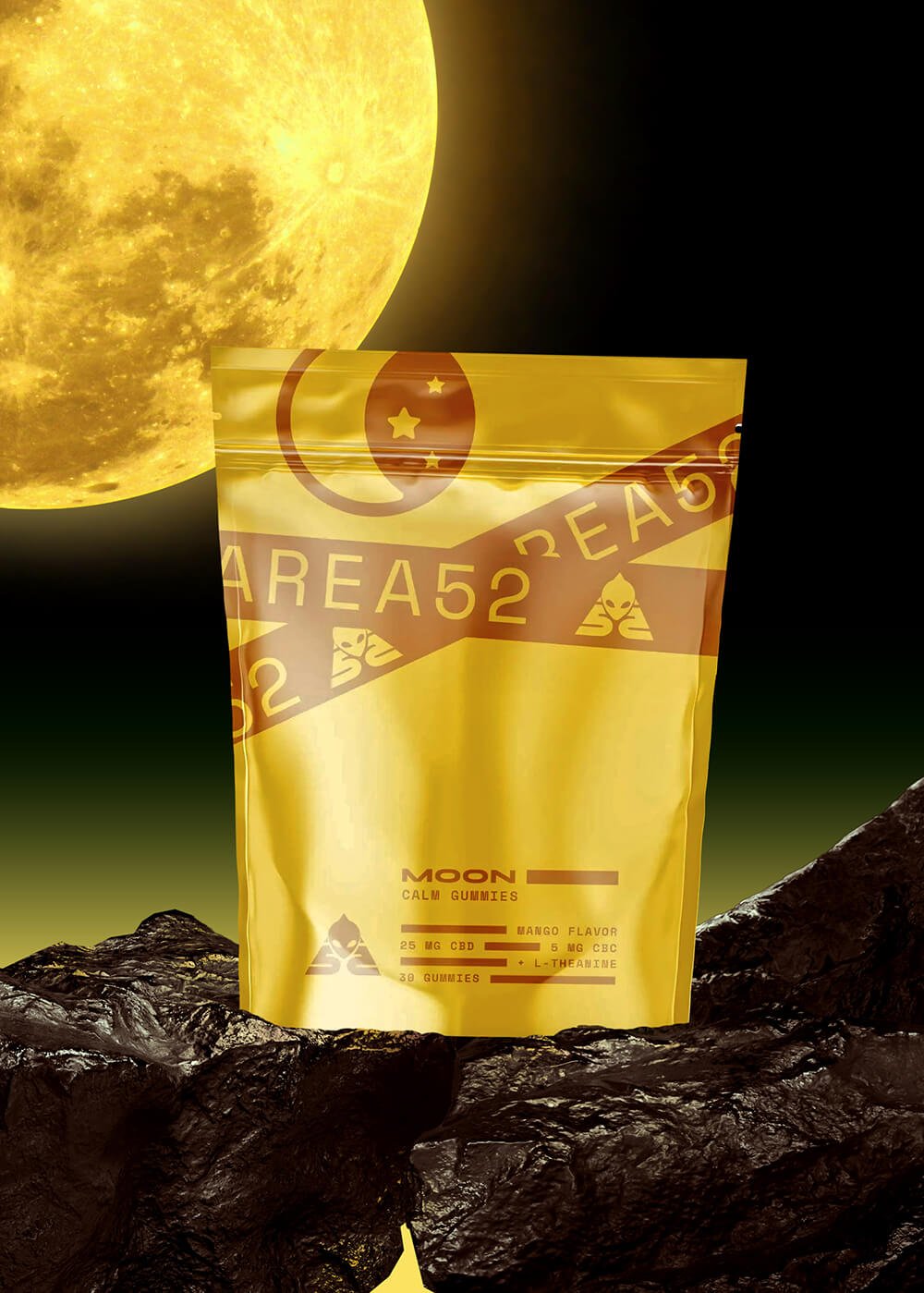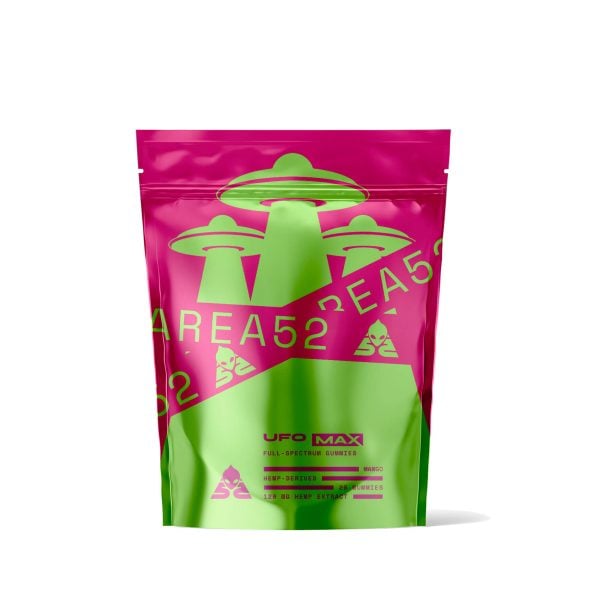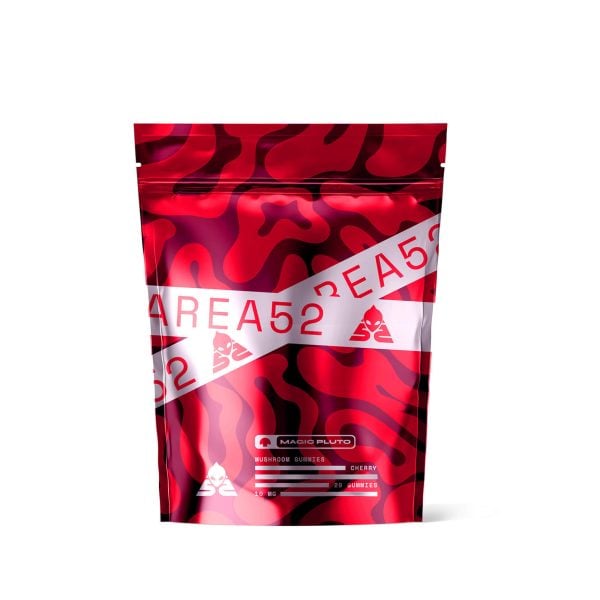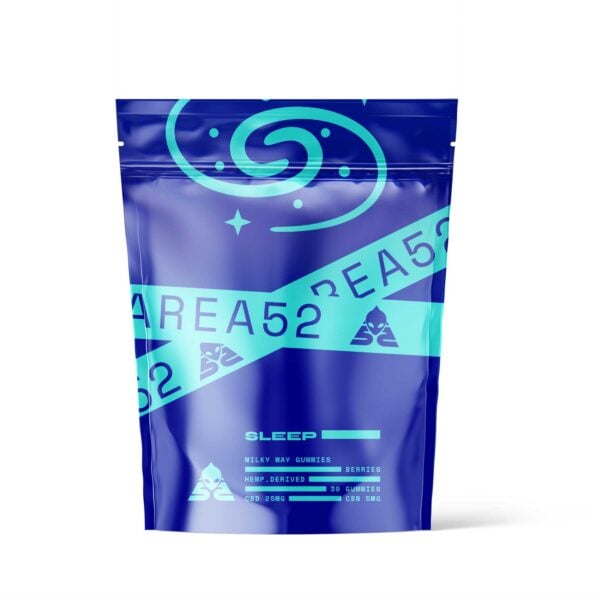What Is CBGA(Cannabigerolic Acid)? Uses & Effects

If you know anything about cannabinoids, you probably know CBGA is considered the “mother” of them all. Enzymes convert CBGA primarily into THCA, CBDA, and CBCA, which then turn into major cannabinoids like THC, CBD, and CBC upon exposure to heat, light, and oxygen or when the cannabis plant matures.
The “mother” thing is not a great metaphor, but we didn’t come up with it.
Regardless, we’re not here to discuss semantics. We just want to give you the rundown on CBGA, why there’s a sudden interest in products like CBGA gummies, and how CBGA could benefit you.
What is CBGA?

CBGA (cannabigerolic acid) is a dihydroxybenzoic acid that comes about when geranyl pyrophosphate biosynthesizes with olivetolic acid. This cannabinoid is found in both the cannabis sativa plant and indica plants.
CBGA plays a crucial role in providing some of the things we love most about cannabis.
Enzymatic reactions turn CBGA into the acidic forms of other kinds of cannabinoids (mostly THCA or tetrahydrocannabinolic acid, CBDA or cannabidiolic acid, and CBCA or cannabichromenic acid), and decarboxylation turns CBGA into CBG; however, by the end of this process, there’s very little CBG because most CBGA gets converted into the other cannabinoids.
How Do You Get CBGA?
If you want the benefits of CBGA, you’ll have to harvest cannabis early on and use it raw since heat turns it into CBG. Even then, it’s hard to know how much you’re ingesting.
CBGA products are getting easier to buy, and it will only increase as technology for extracting it gets better. In fact, there’s a special process that uses yeast to produce pure, useable cannabinoids currently under development.
Because of the increased demand, more companies are starting to offer a variety of products with high amounts of CBGA, so you don’t have to resort to raw plant material — unless you like that kind of thing.
How Does CBGA Work?
CBGA hasn’t been studied as much as THC or CBD has, so we don’t know much about it. Still, the research shows CBGA has some interesting tendencies:
- Certain terpenoids seem to increase CBGA’s activity, specifically δ-selinenest, cis-α- bisabolenest, and α-famesenest. The terpenoids may enhance CBGA’s absorbancy or activity within the cells.
- CBGA shows activity on certain therapeutic targets, such as GABAA and GPCR receptors and TRP channels.
- CBGA has inhibitory effects on DAGLa, which helps regulate 2-arachidonoylglycerol (2-AG, an endocannabinoid) signaling in the central nervous system.
We’ll discuss the implications below in a separate section so the FDA knows we’re not making health claims.
How Does CBGA Make You Feel?
Just like CBG, CBGA is not psychoactive and will not make you feel high. You might not feel much of anything since most of its actions occur on a molecular level. Good thing we don’t base our decisions on what feels good — not all of them, anyway.
You’ll need to use CBGA long-term to get the full benefits.
Is CBGA Legal?
Federal law (through the Farm Bill of 2018) says cannabinoids like CBGA and CBD are legal as long as they’re from hemp and the end product doesn’t contain more than 0.3% THC.
Things might be different at the state level, so check your local laws before buying anything. Some states are strict about hemp products.
How is CBGA Different from CBG?
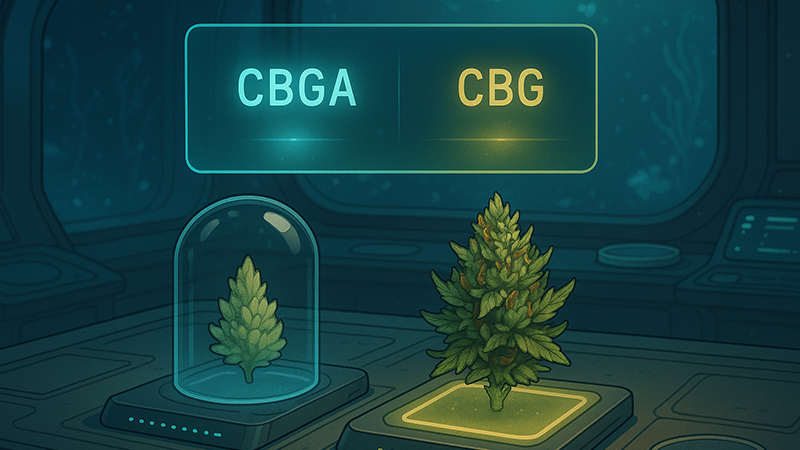
CBGA is the acidic form of CBG; they’re similar in chemical constituents but not the same.
There’s a tendency to think that the acidic cannabinoids are weak versions of the “real” ones, but that’s not quite the case.
One huge way they’re alike? Neither CBG nor CBGA are well-researched, so it’s hard to say anything about them with certainty — including their similarities and differences. Right now, very little medical research has been done on these cannabinoids, especially when it comes to their pharmaceutical and research uses.
It’s hard to find a CBGA flower or cannabis flower with large amounts of CBG since most of it converts to other strong cannabinoids. The plants need to be harvested before the magical transition takes place. Breeders are working on high-CBG strains, which also means taking away from the high-demand cannabinoids. Not exactly a good way to make money.
CBGA is also in low abundance, but it’s a little easier to harvest young cannabis plants with high enough amounts. Still, it’s complicated, so technology might be our saving grace when it comes to these elusive cannabinoids.
CBG and CBGA don’t have the physical effects that THC or CBD have. Instead, they’re geared for long-term health improvements.
CBG and CBGA also interact with many of the same points in the human body, but more research is needed before we speculate on the impact of said interaction.
CBGA Research: Is CBGA Worth the Hassle?
The more research we have on various cannabinoids, the more we realize how much we screwed up by not studying them before. We lost decades of progress to ineffective drug laws based on fear. What’s worse? We know this, but laws (and fear) still hinder us from moving forward.
CBGA is one of many cannabinoids of interest as we attempt to trudge through this new territory. We may lack more in-depth research specifically focusing on CBGA and its potential benefits, but here’s what has researchers so excited.
1. Research on CBGA & Seizures
CBD and, to a lesser degree, THC is well-known anticonvulsants. It’s what put CBD on the proverbial map. The problem with these two is that they’re, well, promiscuous. Pharmacologically. It means they like to hit all kinds of targets instead of focusing their efforts in one area, which increases the risk for side effects.
CBGA shows potent anticonvulsant properties in hyperthermia-induced and spontaneous seizures. In fact, it beat out multiple other cannabinoids, including CBDV, CBDVA, CBGV, CBGVA, and THCV.
It inhibited TRPV1 channels and was a non-competitive agonist of GPR55 — both used in epilepsy-related treatments. Interestingly enough, CBGA did not affect CB1 or CB2 receptors in this study. If you don’t know what those are, you really need to read up on the endocannabinoid system (ECS). This lack of effects on ECS receptors could mean it causes fewer unintended effects.
2. Research on CBGA & GABAA Receptors
Studies show CBGA is an unconventional modulator of (gamma-aminobutyric acid ) GABA receptors.
Unconventional? It enhanced GABA receptor activity at low concentrations, but increased GABAA receptor’s desensitizing properties after extended exposure — possibly limiting CBGA’s usefulness in this area.
3. Research on CBGA & TRP Channels
There’s a deep connection between cannabinoids and transient receptor potential channels (TRP channels). So close, in fact, that some researchers refer to TRP channels as ionic cannabinoid receptors.
Here’s the impact CBGA seems to have on these channels:
- Stimulates TRPV1
- Desensitizes TRPV3 and 4
- Partial agonist of TRPA1
4. Research on CBGA & Oral Care
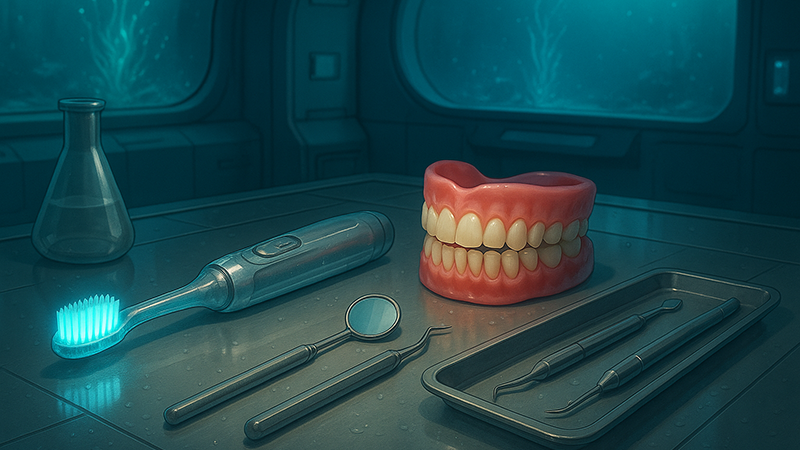
Yes, oral care.
Oral B and Colgate have nothing on cannabinoids, including CBGA.
Standard toothpaste does a decent job limiting the bacteria strains that cause dental plaque, but cannabinoids seem to be even more effective. No joke.
Next time your mom questions your cannabis use, tell her it’s part of your dental care routine.
5. Research on CBGA & Metabolic Diseases
There are three ways CBGA might make a positive impact on metabolic diseases.
A) DAGLa Inhibitor
Some cannabinoids (CBDV, CBDA, THCA, CBDVA, and of course, CBGA) show inhibitory effects on DAGLa, a protein-coding gene.
The possible consequences of inhibiting DAGLa are two-fold:
- Reduced the palatable food intake
- Reduced excessive 2-AG levels — high levels of this endocannabinoid are associated with abdominal obesity and the problems that come with it (glucose intolerance, dyslipidaemia, etc.)
B) AgonisticTowards PPAR
CBGA, CBDA, and CBG also show agonistic activity on peroxisome proliferator-activated receptors (PPARs). These play a role in energy homeostasis and metabolism and can cause metabolic diseases when they’re not working right.
C) ALR2 Inhibitor
Aldose reductase (ALR2), an enzyme, is linked to diabetic complications. There’s ongoing research looking for aldose reductase inhibitors that can help prevent or treat these conditions. CBGA significantly inhibited ALR2 activity.
Because of its actions on DAGLa, PPARs, and ALR2, CBGA could be a part of new treatments for type 2 diabetes, dyslipidaemia, and other metabolic problems.
6. Research on CBGA & Its Antioxidant Activity
CBGA shows antioxidant activity through its ability to scavenge free radicals and slow or stop the oxidation process.
Let’s look at the textbook definition of each.
Free radicals: “Free radicals are any molecular species capable of independent existence that contains an unpaired electron in an atomic orbital.” They’re capable of damaging all kinds of essential molecules, including DNA, and can cause cell damage.
Oxidative stress: “Oxidative stress arises as a result of an imbalance between free radical production and antioxidant defenses.” This is linked to aging, some cancers, and many health conditions, including all inflammatory diseases.
7. Research on CBGA & Cancer
CBGA also has anti-cancer properties and can arrest or slow down the cancer cell cycle. It induces apoptosis or death of the cancer cell, reducing growth and proliferation.
Conclusion: CBGA Could be a Part of Our Future
The problem with these lesser-known cannabinoids is that they’re unknown for a reason. Many occur in amounts that are too small to work with effectively.
Fortunately, as technology improves, we have greater access to more significant amounts of them. And, as we research them, we find how crucial it is to keep going.
The evidence so far tells us we should leverage CBGA to the greatest degree possible — even if we don’t have conclusive evidence (yet), we can still enjoy its benefits for now.
FAQs About CBGA or Cannabigerolic Acid?
Get to know CBGA more through these FAQs.
1. Is CBGA the Mother of All Cannabinoids?
Yes. CBGA is oftentimes called the mother of all cannabinoids since most cannabinoids come from CBGA when the plant matures or gets exposed to heat, light, and air.
2. What is the Difference Between CBG and CBGA?
CBGA (cannabigerolic acid) is the acidic precursor of CBG (cannabigerol) as well as other cannabinoids, while CBG is one of the many types of cannabinoids that came from CBGA.
3. Will CBGA Get Me High?
No. CBGA won’t get you high since it’s non-psychoactive. However, it converts to psychoactive cannabinoids like THC when the plant matures or when exposed to light, air, and heat.
4. What Does CBGA Do for the Body?
CBGA, similar to CBD and THC, also has anti-inflammatory and analgesic effects. Research shows it can also help with seizures, metabolic diseases, and even cancer.
5. How Do You Use CBGA?
There are many ways to use CBGA. You’ll see CBGA oils and tinctures online as well as topicals and hemp flowers.
References Used
- Valliere, M. A., Korman, T. P., Woodall, N. B., Khitrov, G. A., Taylor, R. E., Baker, D., & Bowie, J. U. (2019). A cell-free platform for the prenylation of natural products and application to cannabinoid production. Nature communications, 10(1), 1-9. [1]
- McKinley, R. L. (2022). Marijuana, a Journey through the Endocannabinoid System: Unmasking the Paradoxical Effect-Part 1.
- Anderson, L. L., Heblinski, M., Absalom, N. L., Hawkins, N. A., Bowen, M. T., Benson, M. J., … & Arnold, J. C. (2021). Cannabigerolic acid, a major biosynthetic precursor molecule in cannabis, exhibits divergent effects on seizures in mouse models of epilepsy. British journal of pharmacology, 178(24), 4826-4841. [3]
- Muller, C., Morales, P., & Reggio, P. H. (2019). Cannabinoid ligands targeting TRP channels. Frontiers in molecular neuroscience, 11, 487. [4]
- Stahl, V., & Vasudevan, K. (2020). Comparison of efficacy of cannabinoids versus commercial oral care products in reducing bacterial content from dental plaque: A preliminary observation. Cureus, 12(1).
- Dawidowicz, A. L., Olszowy-Tomczyk, M., & Typek, R. (2021). CBG, CBD, Δ9-THC, CBN, CBGA, CBDA and Δ9-THCA as antioxidant agents and their intervention abilities in antioxidant action. Fitoterapia, 152, 104915. [6]
- D’Aniello, E., Fellous, T., Iannotti, F. A., Gentile, A., Allarà, M., Balestrieri, F., … & Di Marzo, V. (2019). Identification and characterization of phytocannabinoids as novel dual PPARα/γ agonists by a computational and in vitro experimental approach. Biochimica et Biophysica Acta (BBA)-General Subjects, 1863(3), 586-597. [7]
- Smeriglio, A., Giofrè, S. V., Galati, E. M., Monforte, M. T., Cicero, N., D’Angelo, V., … & Circosta, C. (2018). Inhibition of aldose reductase activity by Cannabis sativa chemotypes extracts with high content of cannabidiol or cannabigerol. Fitoterapia, 127, 101-108.
